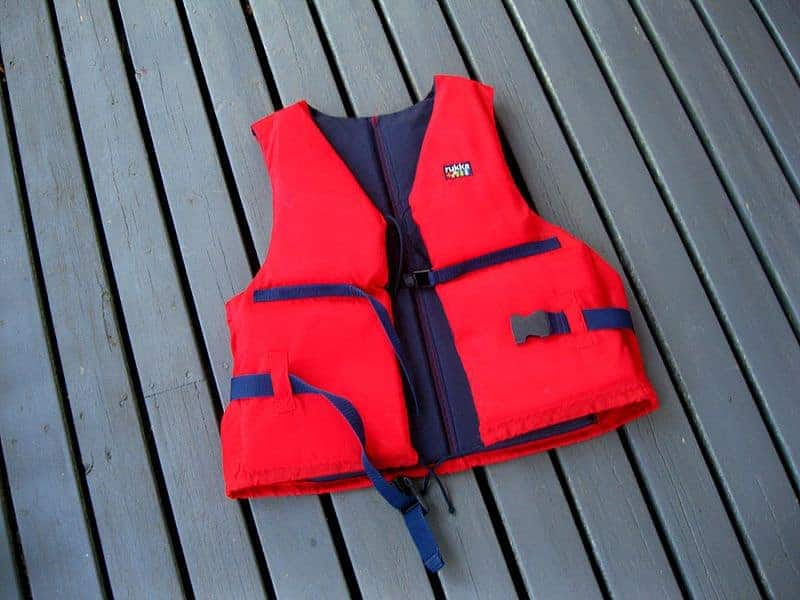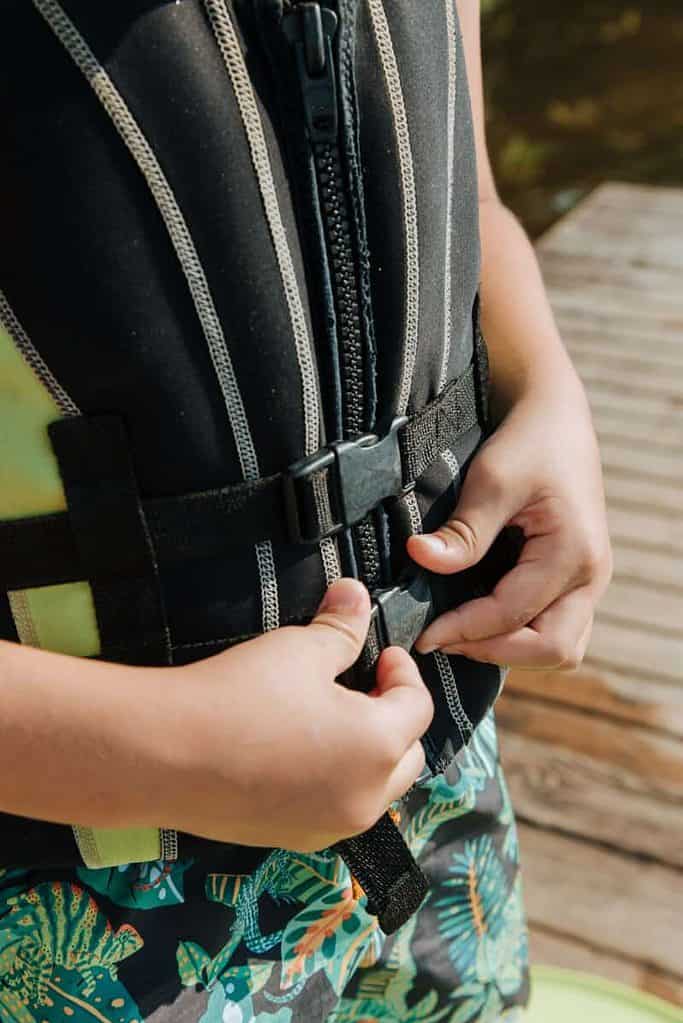
Boating law requires the following with respect to life jackets. All vessels must carry one USCG–approved wearable life jacket for each person on board. In addition to the above requirement, vessels 16 feet in length or longer must have one USCG–approved throwable device on board and immediately available. While life jackets are essential boating gear, many times they just get stored, start to mildew, and boat owners are hesitant to wash them.
How to Clean Your Boats Life Jackets/Vests
If your life jackets have gotten stained, moldy, or just dirty, no worries, they can be leaning using a mild solution of soap, Do Not use Bleach, and it is not recommended to place them in the washing machine. It just takes a few minutes, so let’s look at the following simple steps:
1. Prepare an area to Clean them On
The first step to cleaning life jackets, so to place them on a clean concrete surface or it is recommended to lay a tarp on the ground. Next, fill a bucket with cool water, adding two tablespoons of liquid laundry detergent, or dawn liquid dish soap.
2. Scrub the Jackets
Next, grab the life jackets and place them on the clean prepared surface, either on the concrete or tarp. Use the garden hose, pre-wet the life jackets, then use a soft scrub brush. Dunking the soft scrub brush into the pre-made mild soap solution and applying it to the life jacket, scrub gently in a circular motion.
If the stains are not coming out, one can apply a small drop of detergent (NOT bleach) directly on top of the spot on the life jacket. Then, gently scrub the stains with the brush. Once you’re finished, let the jackets sit for 15 minutes before rinsing.
3. Spot-Clean Mold and Mildew
If your life jackets have gotten mold or mildew on them, pre-soak the area with the mild soap solution, then wet the fabric and scrub as suggested. If the mildew/mold stains persist, add a small amount of OXI Clean One of the simplest, most cost-effective alternatives to oxygen bleach is hydrogen peroxide with is the active ingredient in OXI Clean. Adding a small amount of a cleaning product that contains hydrogen peroxide is a miracle cure for many stains.
4. Rinse the Jackets
As a general rule, you will want to let the cleaning solution on the life jackets sit for about 15 minutes before rinsing. After that time has passed, rinse your jacket with clean water, either from a hose or bucket. Rinse your soft scrub brush and gently run over any areas as needed, re-rinsing making sure that all cleaning solution has been removed. Then it is time to hang them up, letting them dry out of direct sunlight.
5. Store the Life Jackets
Once your life jackets and vests are completely dried, check for any worn areas and or damaged areas including the straps. If they’re good, stow your life jackets in a cool, dry, and dark place. Typically, we’d recommend storing them on your boat as this is where they will be needed the next time you go out on the water, but alternatively, the life vets can be stored inside a plastic bin in your garage/storage area.

Tips for Cleaning Life Jackets
Here are some tips you should follow every time you clean your jackets:
- Always air dry: Never use a heated device or machine, dryer, to dry your life jackets! Instead, dry them in a well-ventilated space out of direct sunlight.
- Use a rotating fan: If drying your jackets indoors, use a rotating fan to speed up the process and prevent mildew.
- Clean right away: When spills occur, and the life jacket gets dirty, or stained while in use, cleaning it off right away, and doing a good cleaning on it when you get him. Scrub with soap (see above) immediately to avoid those stains from setting in
- Rinse after use: To keep your jackets in tip-top shape, Rinse them off with fresh clean water after each use. This is especially important if your jackets are being used in saltwater. Then let them dry out of direct sunlight
When Should You Clean Your Life Jackets?
As a general rule, cleaning your life jacket immediately after your life vest gets dirty is always recommended. Having a cleaning routing of cleaning them during the season on a monthly bases and at the beginning and end of each boating season.
Mold, mildew, and other contaminants can break down the jackets’ materials over time. Therefore, life jackets should be cleaned on a regular basis to maintain their quality. Cleaning the life jackets is also a reminder to check for rips, tears, wear, and other signs indicating they need replacing.
The Not to Do’s When Cleaning Life Jackets
There are several things that will cause risk of damage to your life jackets, once damaged they will need to be replaced;
- Don’t machine-wash or dry-clean your lifejackets. Machines can be hard on the material and straps, causing damage to not only to the machine but also to the life jacket, once damaged they will need to be replaced.
- Never use bleach-based detergents. Chlorine bleach can break down the foam and the life vest itself.
- Don’t dry your life jacket with a heat source (like a clothes dryer). Always hang the jacket to dry in indirect sunlight.
- Never store heavy objects on top of life jackets, as this can crush the floatation material and damage their performance.
Up To What Age Must a Child Wear a Life Jacket?
Children under six years of age must wear a USCG–approved life jacket at all times while on any vessel less than 26 feet in length that is underway upon waters. (“Underway” means any time except when the vessel is anchored, moored, docked, or aground.)
What type of Life Jacket (Personal Flotation Device) is required for Boating?
Personal Flotation Devices (PFDs) – One approved Type I, II or III for each person on board or being towed on water skis etc., in addition, one throwable Type IV device. Must be USCG-approved. Must be in serviceable condition. Must be properly stored.

